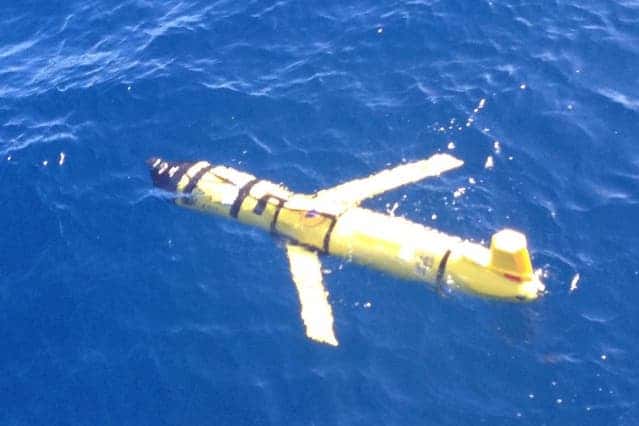
Climate models and environmental monitoring missions are ever more reliant on autonomous underwater vehicles (AUVs) to scour the ocean depths and bring back valuable data like temperature, salinity, carbon levels and so on. Researchers at MIT have now upgraded the way AUVs perform their missions by adding an extra dimension to their autonomy. They demonstrate how a pack of AUVs, directed by a “captain” drone, is able to navigate obstacles and retrieve data with minimal intervention. This dramatically enhances performance and might revolutionize the way scientists study the oceans.
Typically, these sort of robots require predetermined instructions very precisely laid out by a programmer. The alternative is for a person to remotely control the underwater vehicle, but it wouldn’t be autonomous anymore, defeating the purpose. The team at MIT had a different plan, by infusing the bots with almost cognitive-like behavior. Aptly named “Enterprise”, the program uses a hierarchical decision making system in which one AUV is tasked as the “captain” and the other follow its lead. The captain run his decision based on data delivered by the “navigator”, another AUV which watches for obstacles and plans the route, as well as the “engineer”, an AUV which handles any real time situations where there might be a malfunction or engineering problem. Together, the AUVs performed nicely in the waters off the western coast of Australia back in March.
“We wanted to show that these vehicles could plan their own missions, and execute, adapt, and re-plan them alone, without human support,” says Brian Williams, a professor of aeronautics and astronautics at MIT, and principal developer of the mission-planning system. “With this system, we were showing we could safely zigzag all the way around the reef, like an obstacle course.”
“We can give the system choices, like, ‘Go to either this or that science location and map it out,’ or ‘Communicate via an acoustic modem, or a satellite link,'” Williams says. “What the system does is, it makes those choices, but makes sure it satisfies all the timing constraints and doesn’t collide with anything along the way. So it has the ability to adapt to its environment.”

A while ago, researchers deployed robot gliders equipped with sensors that track temperature, salinity and oxygen levels in the waters around the Antarctic. These showed that swirling ocean eddies, similar to atmospheric storms, play an important role in transporting warm waters to the Antarctic coast. Using smarter, more agile gliders scientists can now probe the oceans in places that were previously physically inaccessible. Who knows what they’ll find then. By giving robots control of higher-level decision-making, Williams says such a system would also free engineers to think about overall strategy, while AUVs determine for themselves a specific mission plan. Such a system could also reduce the size of the operational team needed on research cruises.
“If you look at the ocean right now, we can use Earth-orbiting satellites, but they don’t penetrate much below the surface,” Williams said. “You could send sea vessels which send one autonomous vehicle, but that doesn’t show you a lot. This technology can offer a whole new way to observe the ocean, which is exciting.”
Williams and colleagues will present their Enterprise findings at the International Conference on Automated Planning and Scheduling in Israel in June.


